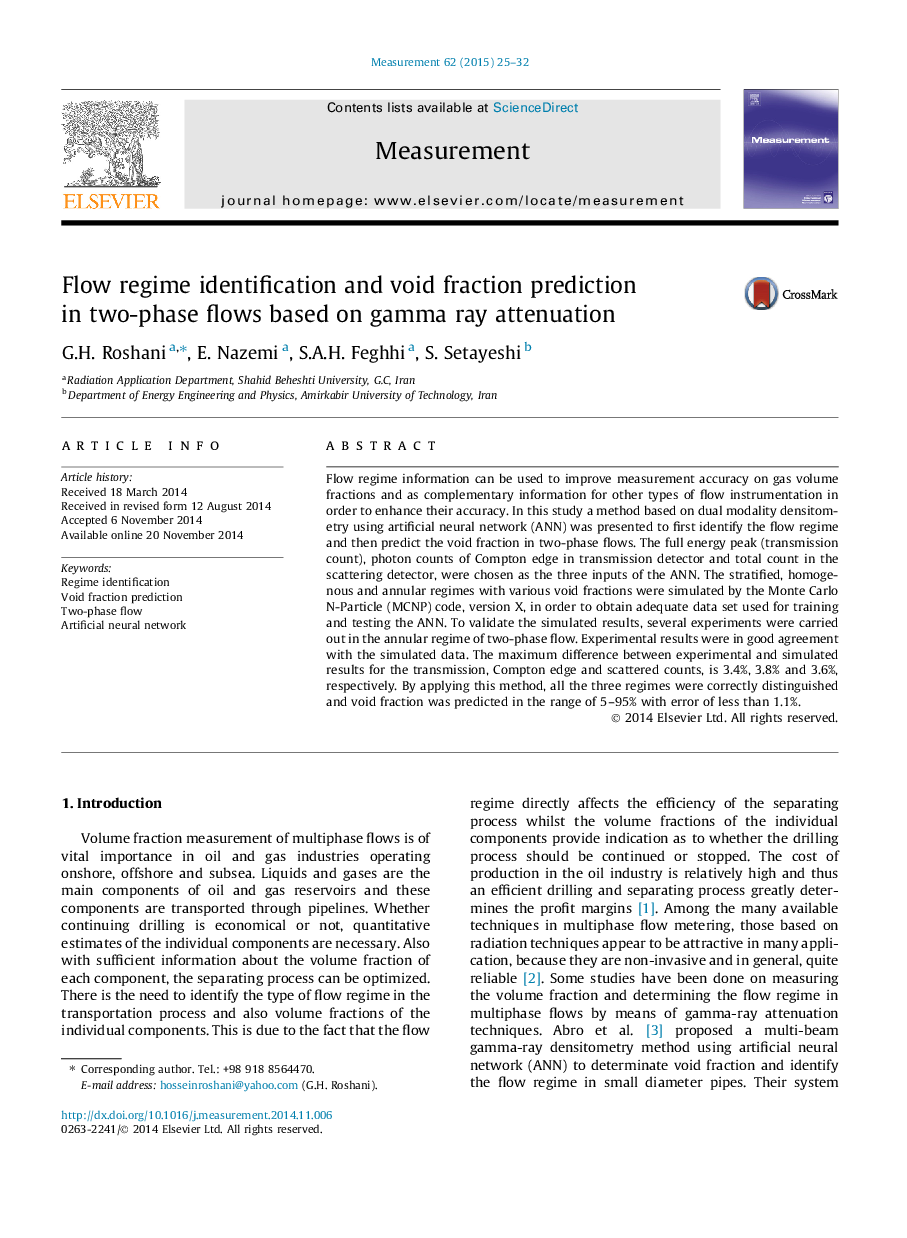| کد مقاله | کد نشریه | سال انتشار | مقاله انگلیسی | نسخه تمام متن |
|---|---|---|---|---|
| 731127 | 1461525 | 2015 | 8 صفحه PDF | دانلود رایگان |
• Benchmarked MCNP-code simulations used to generate data for the ANNs.
• Three features from two detectors were used as inputs of the ANNs.
• Flow regime was identified by a primary ANN in two-phase flows.
• Void fraction was predicted by the other 3 ANNs for the identified regimes.
Flow regime information can be used to improve measurement accuracy on gas volume fractions and as complementary information for other types of flow instrumentation in order to enhance their accuracy. In this study a method based on dual modality densitometry using artificial neural network (ANN) was presented to first identify the flow regime and then predict the void fraction in two-phase flows. The full energy peak (transmission count), photon counts of Compton edge in transmission detector and total count in the scattering detector, were chosen as the three inputs of the ANN. The stratified, homogenous and annular regimes with various void fractions were simulated by the Monte Carlo N-Particle (MCNP) code, version X, in order to obtain adequate data set used for training and testing the ANN. To validate the simulated results, several experiments were carried out in the annular regime of two-phase flow. Experimental results were in good agreement with the simulated data. The maximum difference between experimental and simulated results for the transmission, Compton edge and scattered counts, is 3.4%, 3.8% and 3.6%, respectively. By applying this method, all the three regimes were correctly distinguished and void fraction was predicted in the range of 5–95% with error of less than 1.1%.
Journal: Measurement - Volume 62, February 2015, Pages 25–32
